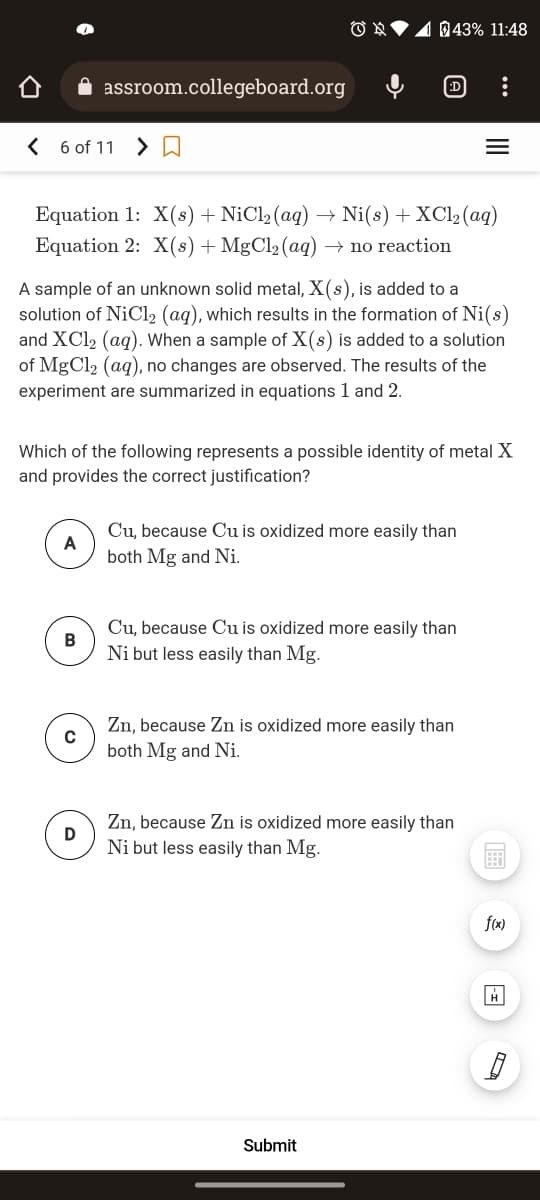Equation 1: X(s) + NiCl₂ (aq) → Ni(s) + XCl₂ (aq) Equation 2: X(s) + MgCl₂ (aq) → no reaction A sample of an unknown solid metal, X(s), is added to a solution of NiCl₂ (aq), which results in the formation of Ni(s) and XCl₂ (aq). When a sample of X(s) is added to a solution of MgCl₂ (aq), no changes are observed. The results of the experiment are summarized in equations 1 and 2. Which of the following represents a possible identity of metal X and provides the correct justification? A B C D Cu, because Cu is oxidized more easily than both Mg and Ni. Cu, because Cu is oxidized more easily than Ni but less easily than Mg. Zn, because Zn is oxidized more easily than both Mg and Ni. Zn, because Zn is oxidized more easily than Ni but less easily than Mg.
Thermochemistry
Thermochemistry can be considered as a branch of thermodynamics that deals with the connections between warmth, work, and various types of energy, formed because of different synthetic and actual cycles. Thermochemistry describes the energy changes that occur as a result of reactions or chemical changes in a substance.
Exergonic Reaction
The term exergonic is derived from the Greek word in which ‘ergon’ means work and exergonic means ‘work outside’. Exergonic reactions releases work energy. Exergonic reactions are different from exothermic reactions, the one that releases only heat energy during the course of the reaction. So, exothermic reaction is one type of exergonic reaction. Exergonic reaction releases work energy in different forms like heat, light or sound. For example, a glow stick releases light making that an exergonic reaction and not an exothermic reaction since no heat is released. Even endothermic reactions at very high temperature are exergonic.

Step by step
Solved in 4 steps


